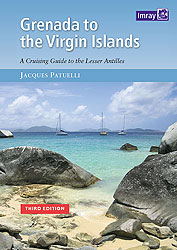| |
|

The island was spotted by Christopher
Columbus on St Vincent’s Day, but he
didn’t linger. In St Vincent, as in Dominica,
the Caribs defended their territory fiercely.
Neither English nor French made any
serious attempts at colonisation until the
middle of 18th century. Finally, in 1763,
the English set foot ashore but were soon
ousted by the French; however, the island
became British again in 1783 under the
Treaty of Versailles. Meanwhile a new race
of people had emerged: the ‘Black Caribs’
had resulted from interbreeding between
native Caribs and slaves whose ships had
been wrecked on the coast. These ‘Black
Caribs’ proved willing to defend their
freedom as fiercely as their Amerindian
cousins. In 1795 the French sought to
make an alliance with them in order to get
them to push the English back into the sea,
but the colonisers offered stubborn
resistance and ended by winning. For the
most part the Black Caribs were deported
to Honduras. However, those who
escaped that fate left a genetic legacy to
the people of St Vincent which is still
visible in some faces. The French are
recalled in many village names and in the
names of coastal features.
There’s also a tie between this island
and distant Tahiti. In his new ship
Providence, after the mutiny on the
Bounty, the famous Captain Bligh
brought more than five hundred
breadfruit trees from Polynesia to St
Vincent. The trees’ fruit ended up pretty
much sustaining the plantation slaves
and was soon in cultivation throughout
the Antilles.
|
|
|
|
Another event is more sadly remembered:
on 6 May 1902, in the island’s north, La Soufrière erupted causing 2,000 deaths. It was a catastrophe but was soon forgotten when two days
later Mont Pelée incinerated 30,000 Martiniquais.
Throughout the colonial period and up to the preent day the island has survived on the growing of bananas and through market gardening.
 St Vincent became an associated state of the Commonwealth in 1969 and began to develop a tourist industry. The island has no international airport, but does exercise sovereignty over the larger part of the splendid Grenadines.
Two events of importance took place in 1979. La Soufrière suddenly erupted, both causing a more general upset and temporarily dislocating the economy. Then, in October that year, St Vincent attained full independence. Agriculture remains the most
important part of the economy, thanks to the very fertile volcanic soil, and is split between agribusiness and peasant smallholdings.
For all the efforts of the authorities tourism remains relatively lightly developed in St Vincent, unlike in the Grenadines. One reason is that the terrain is precipitous and runs down to a few grey sand beaches. Therefore, apart from a few state-run
establishments on the S coast, the island has little by way of a hotel industry or major tourist complexes. St Vincent became an associated state of the Commonwealth in 1969 and began to develop a tourist industry. The island has no international airport, but does exercise sovereignty over the larger part of the splendid Grenadines.
Two events of importance took place in 1979. La Soufrière suddenly erupted, both causing a more general upset and temporarily dislocating the economy. Then, in October that year, St Vincent attained full independence. Agriculture remains the most
important part of the economy, thanks to the very fertile volcanic soil, and is split between agribusiness and peasant smallholdings.
For all the efforts of the authorities tourism remains relatively lightly developed in St Vincent, unlike in the Grenadines. One reason is that the terrain is precipitous and runs down to a few grey sand beaches. Therefore, apart from a few state-run
establishments on the S coast, the island has little by way of a hotel industry or major tourist complexes.
|
|
|






